News
Catalan referendum: one year later, demonstration’s symbols recall what happened —and what not
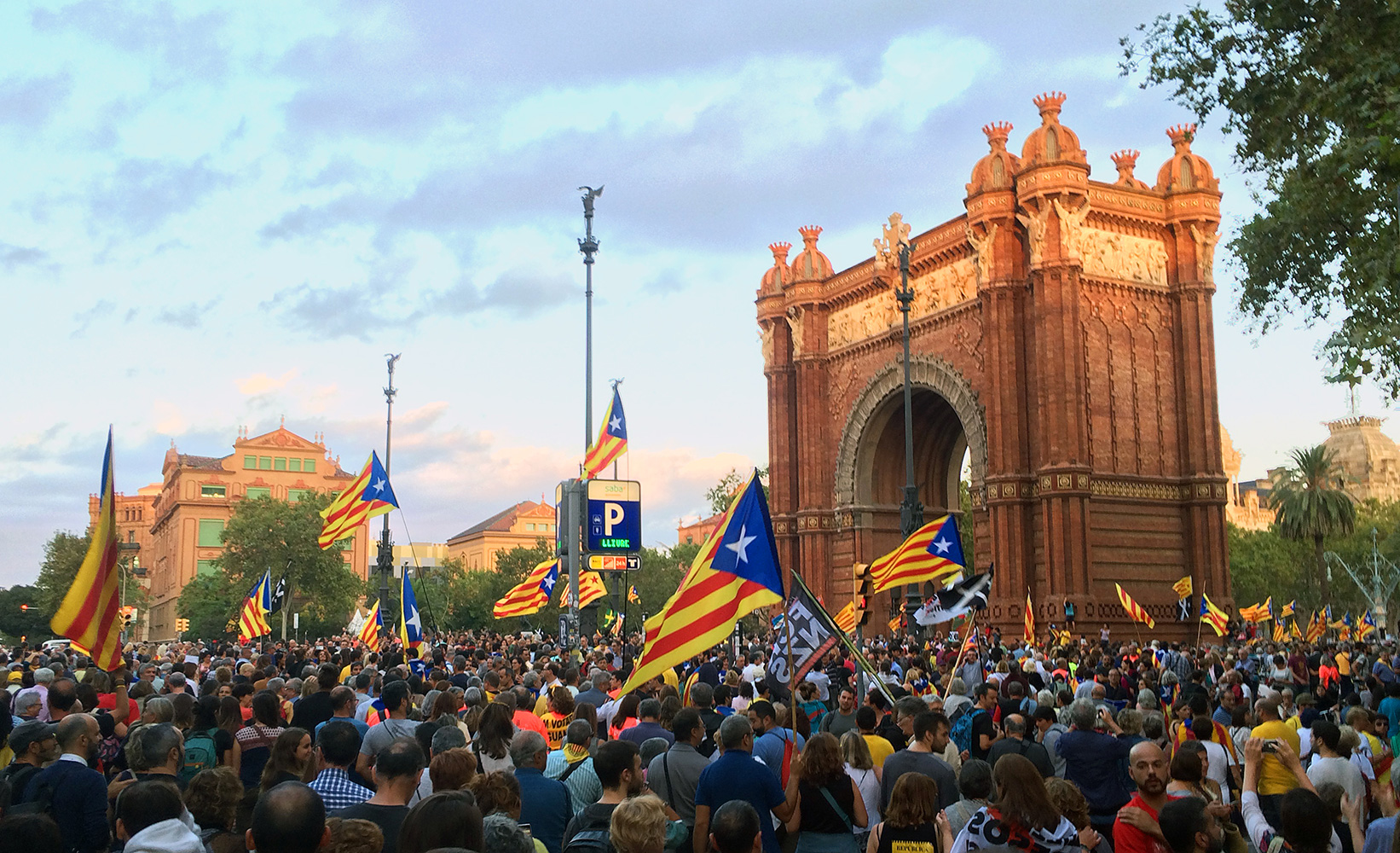
The pro-independence movement continues to show it can easily mobilize hundreds of thousands in the streets. Some estimations say 1 million people demanded a Catalan republic on Catalonia’s national day, 11 September, and yesterday —a working day— almost 200,000 took again to the streets. This power is also reflected in elections: with devolution suspended, pro-independence parties again secured an absolute majority in the Catalan Parliament on 21 December, capturing 70 out of 135 seats. Long negotiations followed suit until a new, pro-independence government was formed on 29 May out of an agreement by the two main pro-sovereignty parties (Together for Catalonia and Republican Left), with Quim Torra as president.
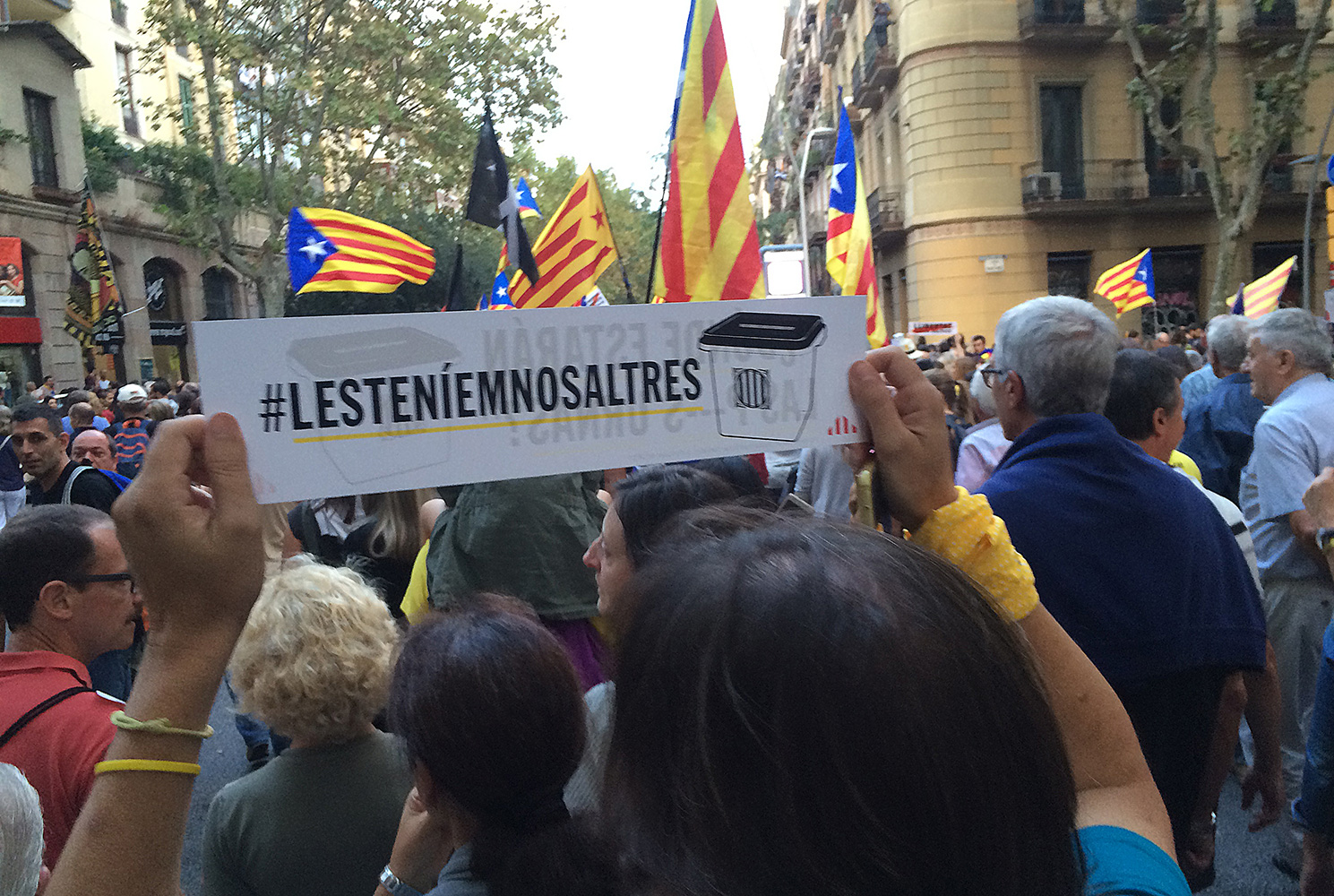
“We had them.” The days before the referendum, Spanish authorities had a very hard time looking for ballot boxes that were going to be used in the vote. Spain had deemed the referendum illegal, but the Catalan government vowed to go ahead with it. A mix of popular and government collaboration got the vote finally held, with many individual citizens hiding the ballot boxes at their own homes or cars the days before the vote. The sign celebrates that the Spanish police was not able to find the boxes in people’s homes.
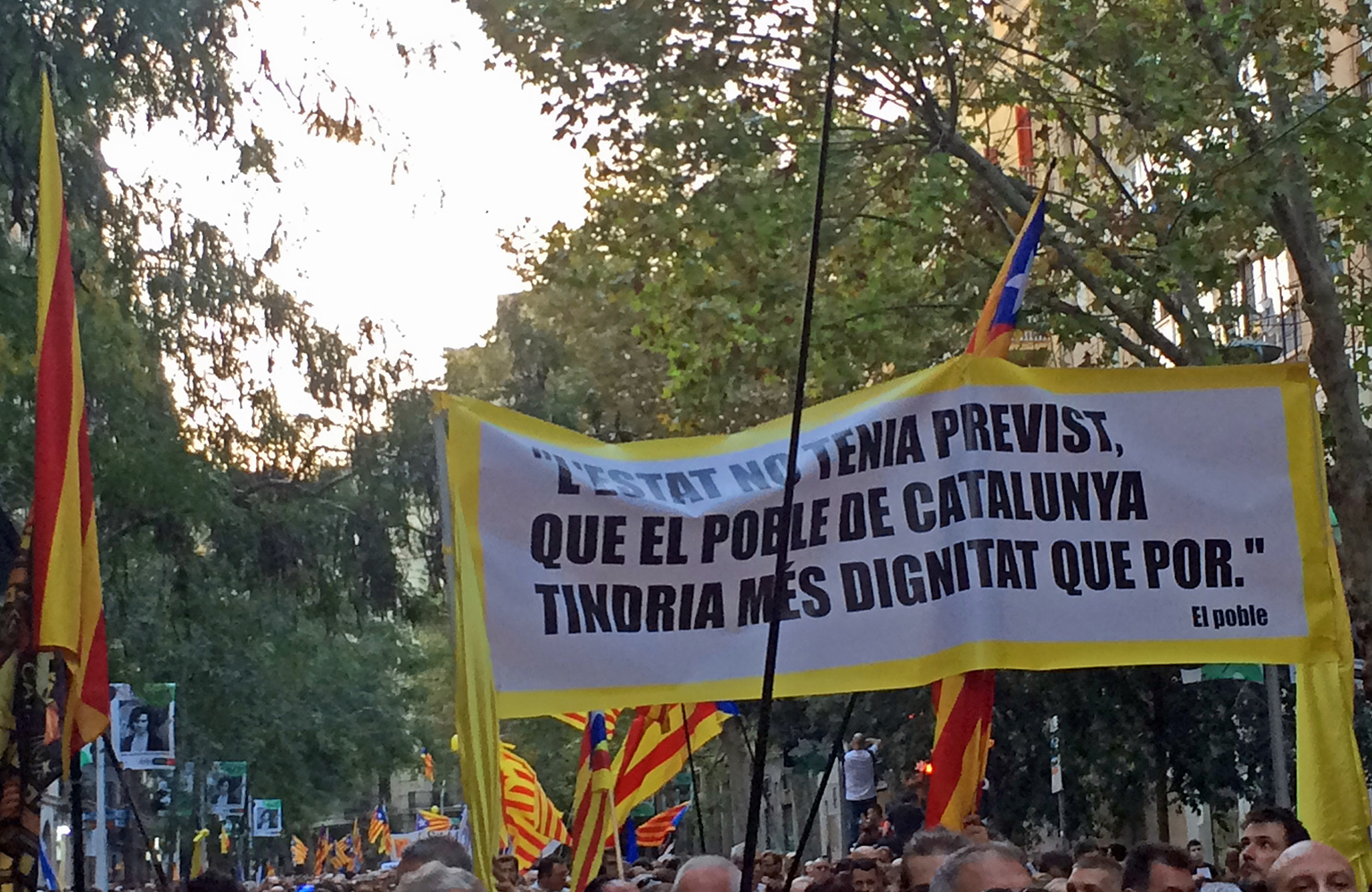
“The [Spanish] state did not foresee that the Catalan people would have more dignity than fear.” The sign celebrates the resolution of more than 2 million Catalans that went to the ballot boxes on 1 October despite a ban from the Spanish authorities against the referendum. Many of them stood for hours at polling stations, ready to defend the places against violent action from the Spanish police, which left some 900 people injured and was labelled by some foreign media as “Spain’s day of shame”. The memories of that collective, popular action remains one of the strongest and proudest one year later.
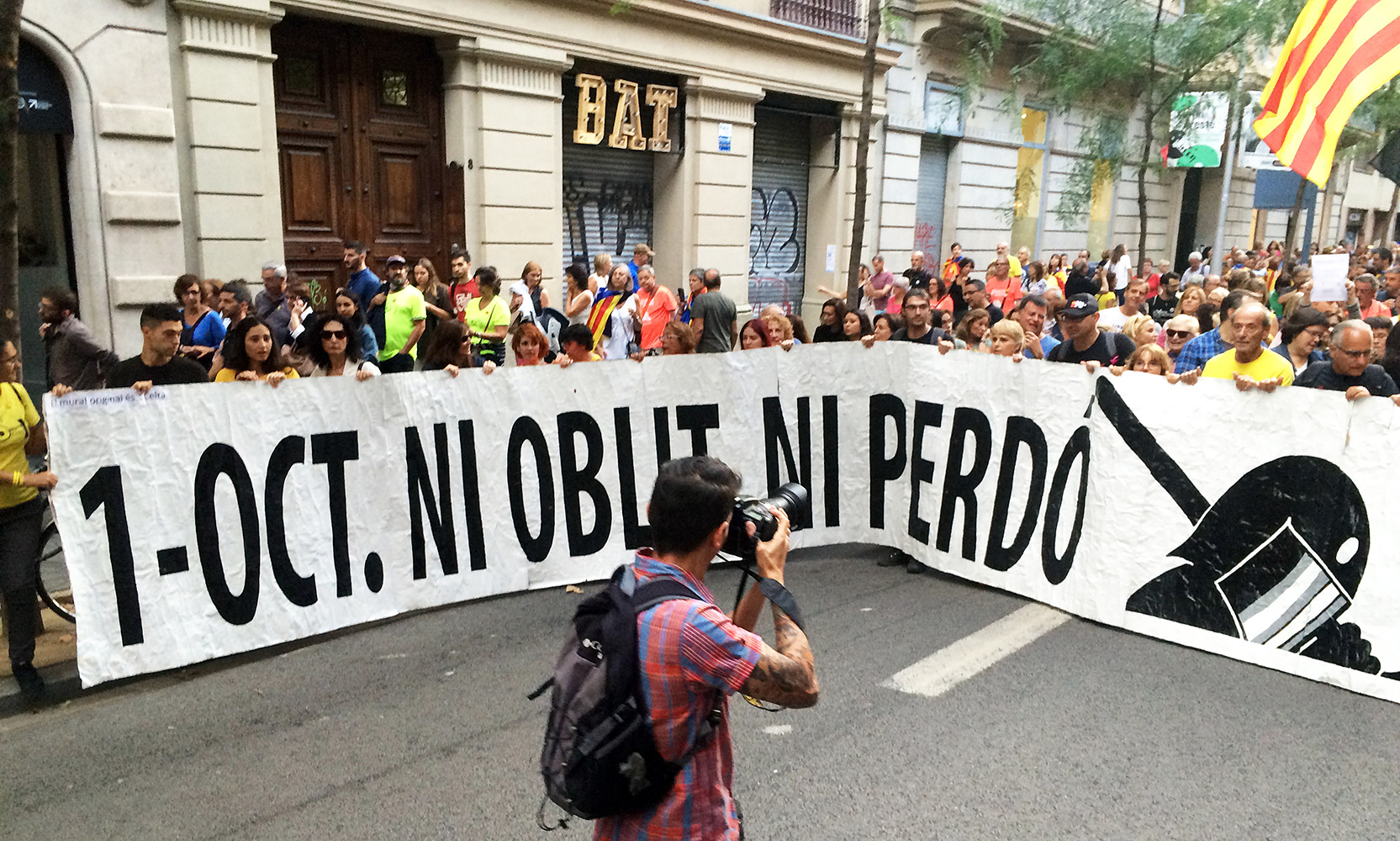
“Neither forget nor forgive.” A massive outcry against brutal action by the Spanish police against peaceful voters —both those voting for independence and against— led Catalans to observe a general strike on 3 October. As time goes by, the images of the police beating people is not erased from memory, remains an open wound, and will likely remain for many years to come, especially if there is no official complain from the Spanish authorities’ side. Yesterday, Spanish government spokeswoman said the violence on the police side was “a mistake” but immediately cast a doubt on some of the images that showed people injured.
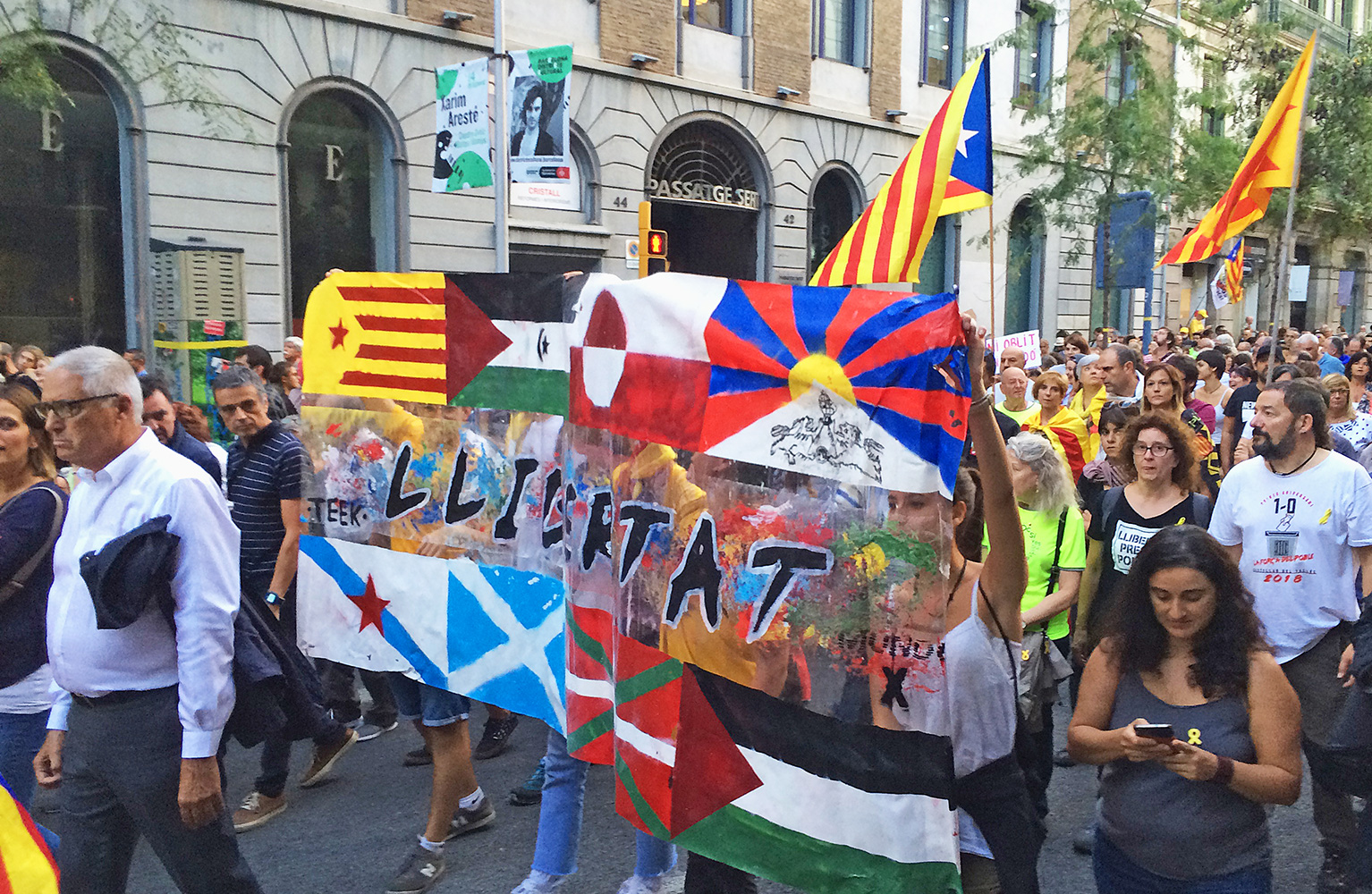
Demonstrators show flags of several stateless nations. In the aftermath of the referendum, some sub-state and local governments showed supported for Catalonia and demanded the recognition of the right to self-determination, such as Scotland, Corsica or Sardinia. But when the Catalan Parliament declared independence on 27 October, Catalonia failed to receive one single recognition from any independent country or from the European Union, which some trusted as a potential mediator in the crisis.
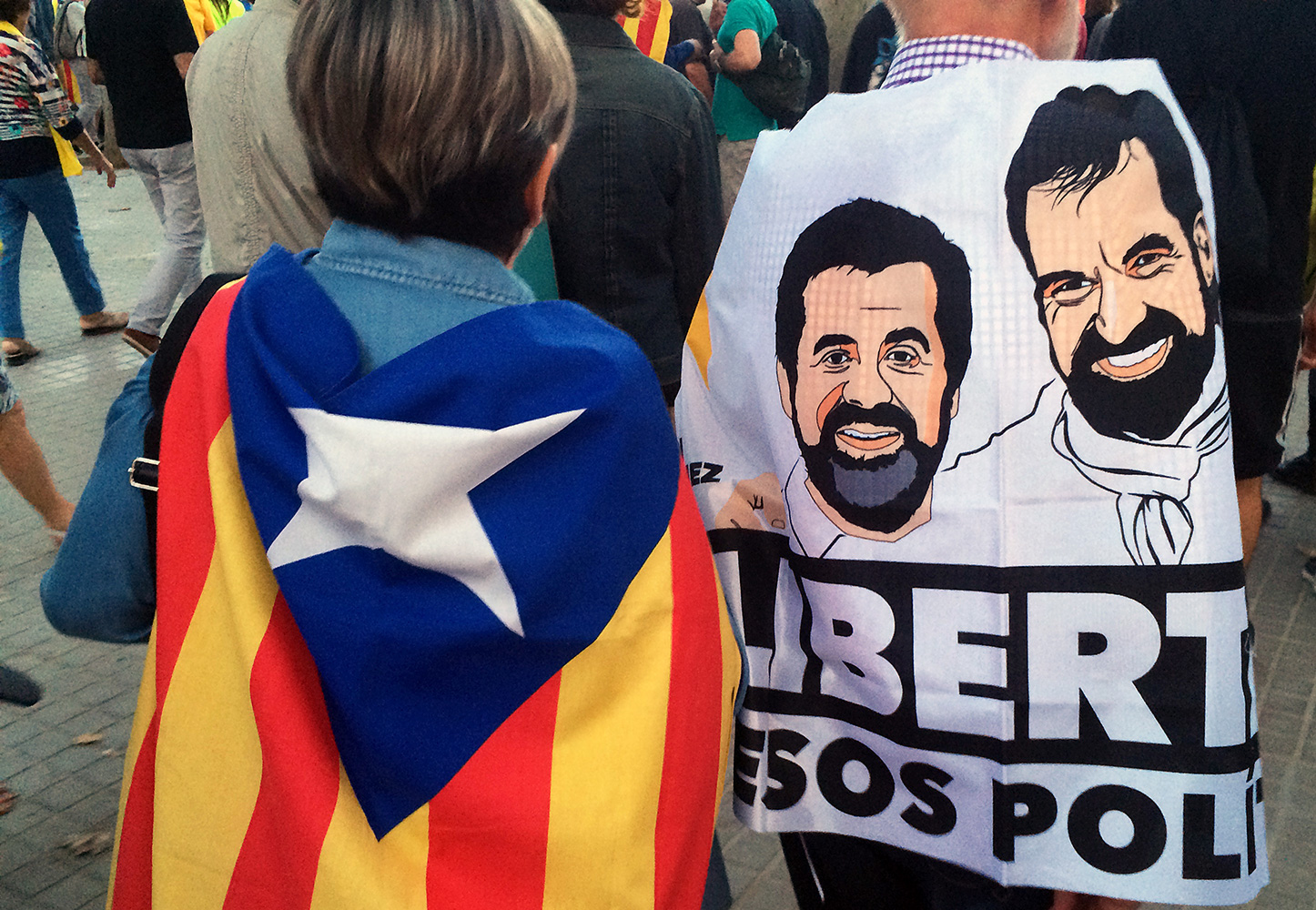
The man on the right shows portraits of Jordi Sànchez and Jordi Cuixart, the leaders of two main pro-independence civil society organizations Catalan National Assembly (ANC) and Òmnium Cultural. Both remain in pre-trial detention since 16 October on sedition and violent rebellion charges after having led a demonstration on 20 September. No violence was recorded at that demonstration, and organizations such as Amnesty International have deemed the charges “excessive”. They were the two first political prisoners in the aftermath of the referendum. Since then, they have become for many Catalans a symbol of unfair treatment and repression against the pro-independence movement.
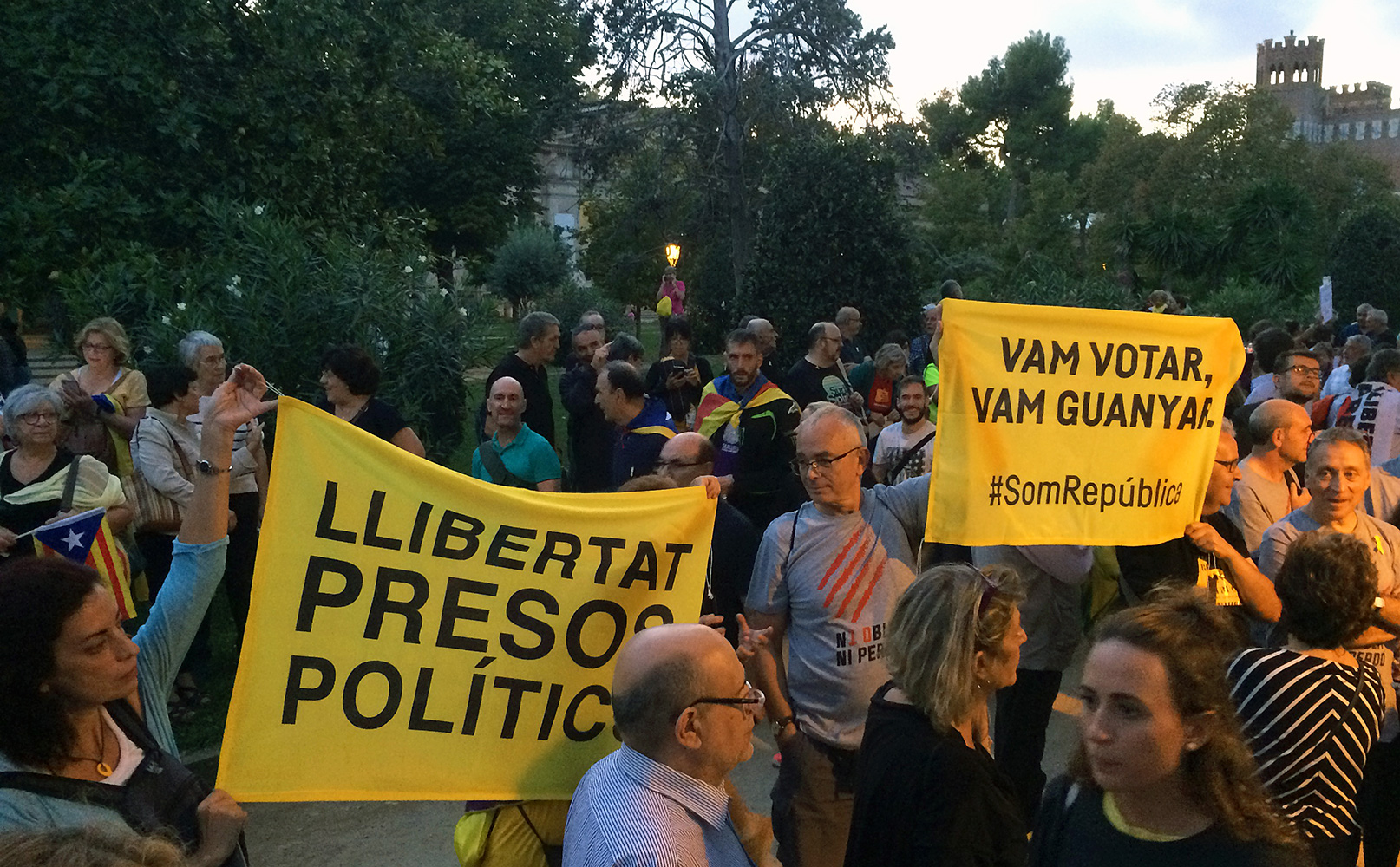
“Freedom political prisoners”. After Cuixart and Sànchez, seven more people became political prisoners: six ministers of the Catalan government —Montserrat Bassa, Quim Forn, Oriol Junqueras, Raül Romeva, Josep Rull and Jordi Turull— and president of the Catalan Parliament Carme Forcadell. The have also been in pre-trial arrest since November, also over rebellion and sedition charges, as another five members of the Catalan government, including president Carles Puigdemont, left for exile —where they remain— before being detained. The seven Catalan leaders and the two civil association presidents could face sentences of up to 30 years. On the right side, another sign reads “We voted, we won. We are republic”. Official data from the Catalan government says 92% in 1 October voted for independence, with a turnout of 42%. Police violence nonetheless heavily disrupted the vote —with some ballot boxes forcibly taken by policemen—, so it is fairly impossible to have a real picture of what would have happened in a peaceful referendum.
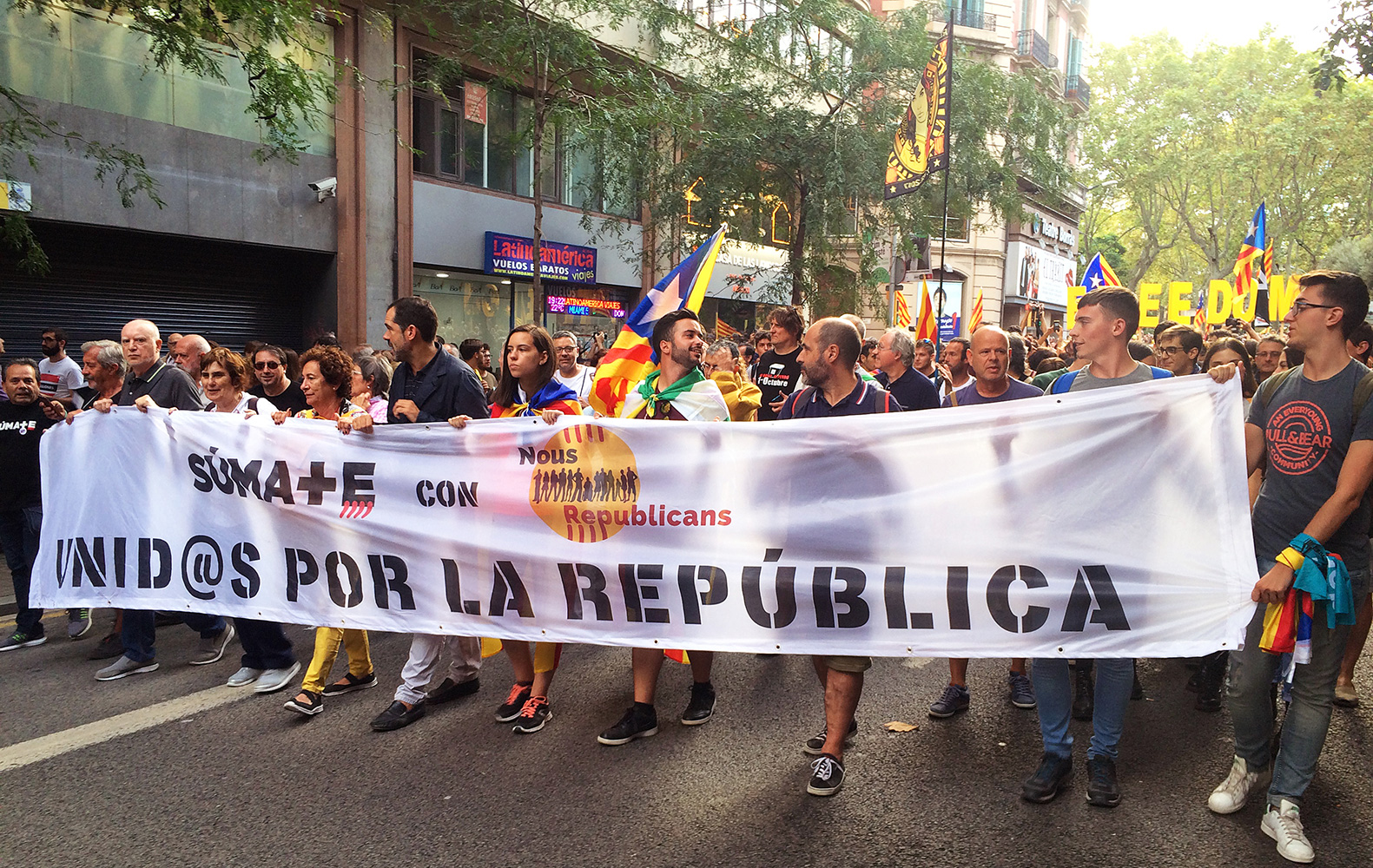
Before and after the referendum, pro-independence parties and associations tried to appeal to Catalans with family roots in Spain and other countries to join the sovereignty cause. One of such actions was the establishment of the Súmate group, made up of Catalans who have Spanish as their main language. It is estimated that at least 25% of independence supporters in Catalonia have Spanish as their mother tongue. The independence movement seeks to highlight the fact that the Catalan republic is a civic goal with no ethnic meaning.
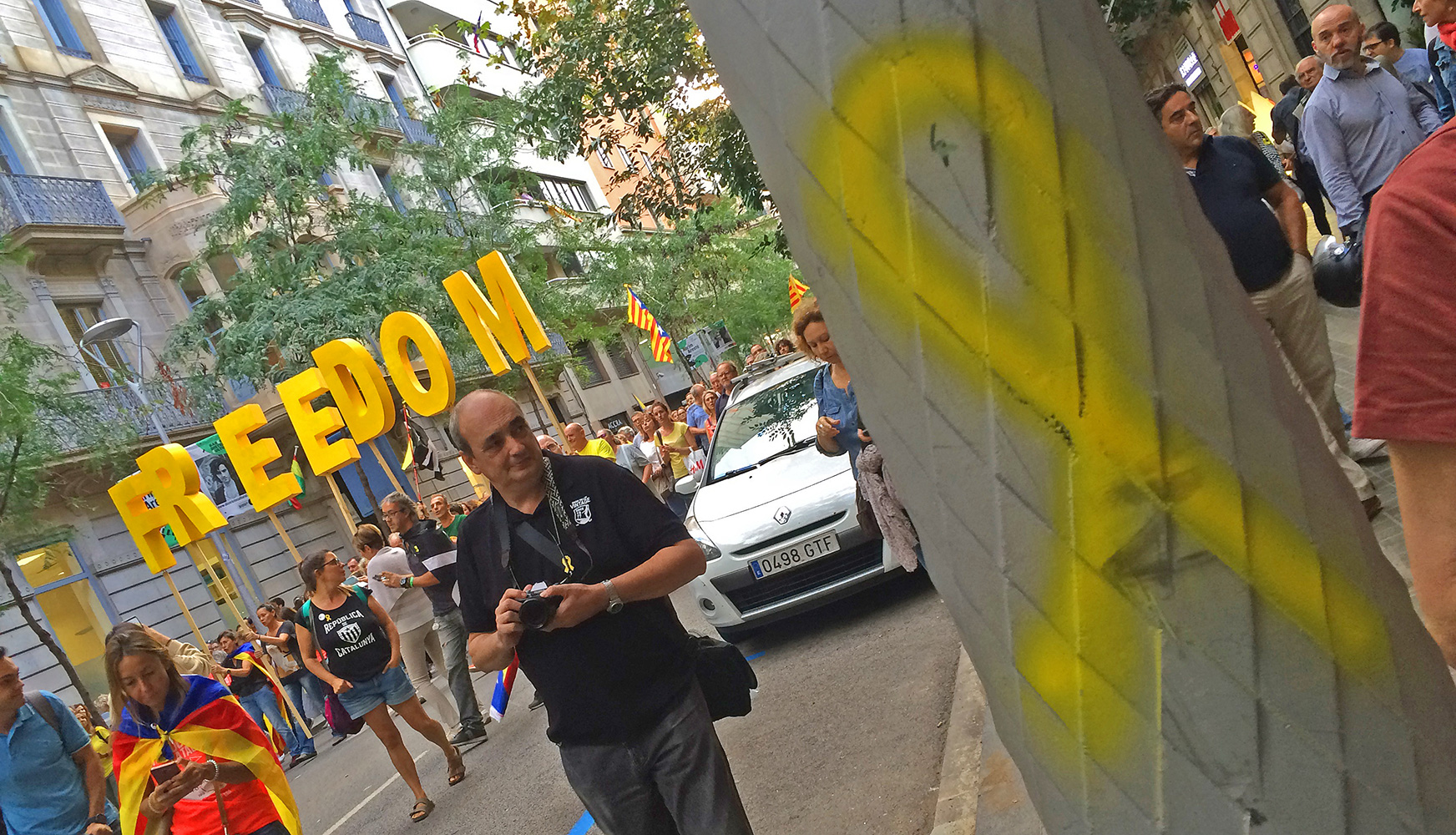
Yellow ribbons have become the symbol of solidarity with political prisoners. Even though, right-wing Spanish nationalist PP and Citizens (C’s) parties have taken a tough stance against their display in the public space. Both parties, furthermore, have been calling these days on the Spanish government —now led by social democrat PSOE— to again suspend devolution, on the grounds that the climate in the streets is violent and that the Catalan government continues to strive for independence. Some violence in the streets has indeed been recorded over the last months, but it has been mostly in aggressions by Spanish nationalists. Behind the ribbon, a group of people are forming the word “Freedom” as a symbol that encloses the current main demands by the pro-independence movement —and beyond: personal freedom for all political prisoners, and political freedom and agreement to hold an official referendum on independence, as Quebec and Scotland did some years before.
(All the pictures by David Forniès.)
